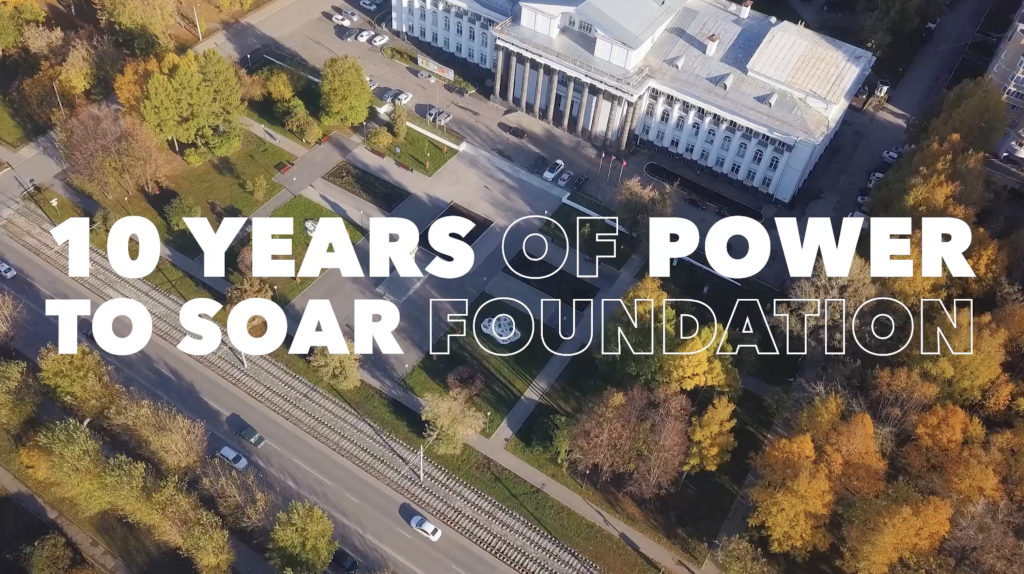Abuse in foster care remains a deeply concerning issue, impacting thousands of vulnerable children every year. With near 400,000 children in the foster care system in the United States, many face not only the challenges of displacement but also the risk of neglect, physical harm, and emotional trauma. Alarmingly, nearly one-third of foster children in certain states have reported experiencing abuse within foster homes, shedding light on systemic shortcomings.
This article delves into the troubling statistics surrounding foster care abuse, highlighting the urgent need for reform and accountability. From understaffed child welfare agencies to unqualified caregivers, the factors contributing to these alarming trends will be explored. Readers will gain insight into the scale of the issue and the critical steps needed to ensure every child in foster care is protected from harm.
Key Takeaways
- Alarming Prevalence of Abuse – Children in foster care are significantly more likely to experience abuse, with up to 40% facing some form of maltreatment.
- Common Types of Abuse – Neglect is the most frequent form (53%), followed by physical abuse (16%) and sexual abuse (4.4%), with residential facilities reporting higher abuse rates.
- Declining Foster Care Population – The number of children in foster care has decreased by 6% in recent years due to preventive measures and family preservation efforts.
- High Vulnerability Factors – Parental substance abuse, young age, and severe mental health challenges contribute to the heightened risks faced by foster children.
- Ongoing Reform Efforts – Policies like the Family First Prevention Services Act and state-led prevention plans aim to improve child welfare and reduce the need for foster care placements.
Table of Contents
Understanding Abuse In Foster Care
Abuse in foster care affects thousands of children annually, posing severe risks to their physical and emotional well-being. Mistreatment can take many forms, including physical harm, emotional manipulation, sexual exploitation, and neglect. Abuse often leads to long-term impacts such as PTSD, depression, and developmental delays.

Studies reveal that group homes and residential facilities report higher rates of abuse than family-based foster care. Nearly 50% of sexual abuse cases in a 2017 report occurred in these settings, highlighting vulnerabilities when children lack consistent care or supervision. Factors like caregiver shortages and insufficient funding for child protective services exacerbate these risks.
Child welfare agencies bear responsibility for ensuring foster homes provide safe environments. Screening processes, mandatory training for foster parents, and proactive investigations into abuse allegations play critical roles. By addressing systemic issues like understaffing and resource gaps, the foster system can better shield children from harm.
Key Statistics on Foster Care and Abuse
Understanding the scope of abuse in foster care highlights the risks and challenges faced by vulnerable children. Comprehensive data reveals troubling patterns of maltreatment, emphasizing the urgency of addressing these issues.
Prevalence of Abuse in Foster Care
Children in foster care are statistically more likely to experience abuse compared to those in the general population. Estimates suggest that up to 40% of children in foster care may experience some form of abuse within the system (Alba Care Services). The exact figures remain difficult to determine due to underreporting and discrepancies in reporting mechanisms.
Types of Abuse Faced by Children
The most common forms of maltreatment in foster care include:
- Neglect: Affects over 53% of children in foster care (Alba Care Services).
- Physical abuse: Impacts nearly 16% of foster children (Alba Care Services).
- Sexual abuse: Occurs in 4.4% of cases (Alba Care Services).
- Retrospective reports: In past cases, sexual abuse was the most prevalent form of maltreatment, accounting for 68% of such reports (Illinois CFR).
Studies indicate that residential facilities, such as group homes, have disproportionately high abuse rates, with nearly 50% of sexual abuse cases occurring in these environments (Ballard Brief).
Foster Care Population and Trends
As of 2022, there were 368,500 children in foster care in the United States, marking a 6% decline from the previous year. This decrease follows a consistent downward trend over the past four years, attributed to efforts to prevent foster care placements and prioritize family preservation (ACF).
Risk Factors and Vulnerabilities
Several factors contribute to the vulnerability of children in foster care:
- Parental substance abuse: Affects almost 30% of children in foster care (Alba Care Services).
- Age: In 2019, 48% of new foster care entries were children aged five or younger (Alba Care Services).
- Mental health challenges: Up to 80% of children in foster care struggle with significant mental health issues, compared to 18-22% in the general population (Penny Lane Centers).
Long-Term Impacts of Abuse in Foster Care
Children who experience abuse in foster care often face long-term consequences:
- PTSD: 25% of foster children develop post-traumatic stress disorder (PTSD), a rate twice as high as that of U.S. war veterans (Speak Up Now).
- Depression and self-esteem issues: Foster youth exhibit high rates of debilitating depression and low self-esteem, significantly affecting their ability to transition into adulthood (Speak Up Now).
Efforts to Address the Issue
Several initiatives aim to improve outcomes for children in foster care:
- The Family First Prevention Services Act: Focuses on preventing foster care placements and preserving families (ACF).
- State-Level Prevention Plans: As of 2024, 42 states, 4 tribes, and the District of Columbia have approved plans to implement prevention services (ACF).
While these efforts represent progress, the statistics underscore the continued need for vigilance, policy reform, and support programs to protect vulnerable children in the foster care system.
Root Causes Of Abuse In Foster Care
Understanding the root causes of abuse in foster care sheds light on the vulnerabilities within the system. Identifying the systemic shortcomings, lack of resources, and personnel challenges is critical to addressing these issues.
Systemic Challenges And Limitations
Children in foster care often face systemic vulnerabilities. Overcrowded and underfunded child welfare systems make it difficult to meet their needs. Reports highlight that nearly half of sexual abuse cases occur in group homes or residential facilities due to insufficient supervision and inconsistent policies. The fragmented structure of child welfare services results in children being overlooked, as responsibilities are spread across numerous agencies and roles.
Additionally, the deprofessionalization of child welfare work introduces a reliance on routinized assessments and checklists. As no individual handles all aspects of a child’s care, crucial warning signs of abuse often go unnoticed.
Inadequate Training And Resources
Caregivers and caseworkers frequently lack adequate training and resources. Many foster families entered the program without the specialized skills needed to address complex trauma or behavioral challenges. This gap can lead to neglectful care in situations requiring professional intervention.
A broader issue is insufficient funding for child welfare services. Limited budgets restrict access to training, support programs, and advanced screening for foster caregivers. Such constraints exacerbate the struggle to ensure safe environments, increasing the risk of harm for foster children.
High Caseworker Turnover And Oversight Issues
High turnover among caseworkers disrupts continuity of care. This high attrition rate, driven by stress and job dissatisfaction, hampers efforts to track a child’s history, needs, and risks. As new caseworkers take over, gaps in information often emerge, leaving potential signs of abuse uninvestigated.
The lack of consistent oversight also limits accountability. With numerous professionals involved in a child’s case, communication gaps result in missed opportunities to detect and address concerns early. As a result, children may be left in unsafe placements for extended periods.
Impact Of Abuse On Foster Children
Children in foster care often face significant challenges due to past abuse or neglect. Understanding the impact of these experiences is essential for prospective foster parents, as it can help them support children effectively and create a safe, nurturing environment.
Emotional and Psychological Trauma
Foster children frequently experience emotional and psychological trauma as a result of abuse or neglect. Factors like physical harm, emotional manipulation, and abrupt separation from family often lead to conditions such as PTSD, anxiety, and depression. Research shows that a considerable number of foster children struggle with PTSD, making it crucial for foster parents to provide a stable and predictable environment. Encouraging open communication, offering consistent reassurance, and seeking professional mental health support when necessary can help children overcome these challenges.
Physical Health Consequences
Past abuse may also result in physical health issues for foster children. Neglect, for instance, can lead to developmental delays, malnutrition, and untreated medical conditions. Foster parents should prioritize regular healthcare checkups, ensure children receive proper nutrition, and be alert to any signs of physical discomfort or developmental concerns. Providing access to healthcare professionals and specialists equipped to handle childhood trauma can address these needs effectively.
Long-Term Effects on Relationships and Development
The long-term effects of abuse often contribute to difficulties in forming and maintaining relationships. Social withdrawal, trust issues, or fear of attachment are common among foster children. These challenges can hinder their ability to build connections with peers, caregivers, and even siblings. Foster parents play a vital role in helping children navigate these hurdles by showing patience, building trust gradually, and celebrating small milestones in their social interactions. Over time, a supportive and loving environment can empower children to rebuild their confidence and improve their social and developmental skills.
By recognizing and addressing the emotional, physical, and social consequences of abuse, foster parents can make a meaningful difference in a child’s life.
Policy And Reform Efforts
Efforts toward better foster care policies focus on preventing abuse, improving accountability, and providing critical support for children and youth during and after foster care. These reforms aim to create safer, more nurturing environments for children and ensure their well-being.
Strengthening Prevention Measures
Strengthened prevention measures can significantly reduce the risk of abuse in foster care. Child welfare agencies integrate mandatory training programs to prepare foster parents for addressing trauma and complex behavioral needs. Regular home visits, combined with unannounced safety checks, serve as additional layers of monitoring to catch early signs of neglect or abuse. Screening processes for prospective foster parents evaluate not only the applicant’s background but also their skills to handle the unique needs of foster children.
Preventing abuse also involves equipping caseworkers with adequate resources and reducing caseloads. When caseworkers manage fewer cases, they can focus on providing individualized attention, identifying risks, and intervening promptly when issues arise.
Improving Child Welfare Accountability
Accountability measures strengthen system-level oversight and case-level protection for children. Incorporating quality measures into state child welfare systems ensures that foster homes are regularly evaluated for safety and suitability. For example, agencies collect data on child well-being, health outcomes, and placement stability, making informed decisions based on measurable progress.
Digital record-sharing systems offer caregivers and caseworkers real-time access to medical and educational histories, helping streamline case planning and reduce potential delays. Federal funding supports initiatives encouraging states to adopt innovative practices, such as matching children with foster families who align with their needs and goals. Through these initiatives, child welfare agencies work to meet higher safety standards and effectively address systemic weaknesses.
Support For Youth Aging Out Of Care
Youth transitioning out of foster care often face considerable challenges, including homelessness, unemployment, and limited access to healthcare. Extending foster services to age 21 in many states provides additional time for youth to develop life skills and gain stability. Programs focusing on education, job training, and housing assistance empower young adults to build sustainable futures.
Culturally responsive, trauma-informed services further aid these youth in overcoming past adversities. Foster systems partner with community programs to provide mentoring, financial literacy training, and mental health resources. This holistic support helps young adults bridge the gap between foster care and independence, offering them a stronger sense of security as they take steps toward adulthood.






